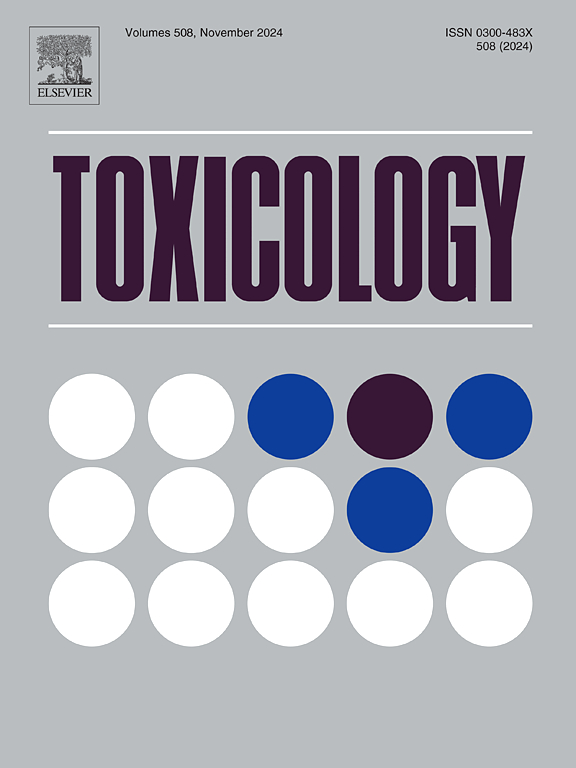Translational insights into statin-induced myotoxicity: Differential impact of lipophilic and hydrophilic statins on iPSC-derived skeletal muscle cells from patients with familial hypercholesterolemia
IF 4.8
3区 医学
Q1 PHARMACOLOGY & PHARMACY
引用次数: 0
Abstract
Statins are highly effective cholesterol-lowering drugs that can reduce the risk of cardiovascular events. Statins are well tolerated but some patients experience statin-associated muscle symptoms (SAM) that can reduce adherence to therapy. We investigated molecular mechanisms statin-induced myotoxicity using induced pluripotent stem cells (iPSC)-derived skeletal muscle (SKgM) cells. iPSC-SKgM cells were obtained from patients with familial hypercholesterolemia (FH) experiencing SAM (n = 3) or not (nonSAM, n = 3). iPSC-SkgM cells were treated with atorvastatin and rosuvastatin (1 to 100 µM). Statin cytotoxicity was assessed by functional assays (cell death, mitochondrial damage, caspase 3/7 activity). iPSC-SkgM cells from SAM patients were more sensitive to atorvastatin toxicity than nonSAM cells (p < 0.05), recapitulating the phenotype of SAM patients. Rosuvastatin was less cytotoxic than atorvastatin in iPSC-SkgM (p < 0.05) from both SAM and nonSAM patients. Transcriptomic analysis revealed stronger effects on gene expression in SAM-derived iPSC-SKgM cells treated with atorvastatin (106 genes) than rosuvastatin (33 genes) compared to nonSAM cells. Enrichment analyses predicted associations of these genes with cell growth, muscle function, pro-inflammatory processes, and apoptosis. Proteomic analysis also showed more proteins differentially abundant in atorvastatin (61 proteins) than in rosuvastatin (26 proteins) treated cells. These proteins were related to cell biosynthetic process, signaling and communication, nucleic acid metabolism, and protein processing. In conclusion, atorvastatin has greater toxicity than rosuvastatin to iPSC-SKgM cells, an outcome exacerbated in FH patients who experienced SAM. Atorvastatin has stronger effects on expression of molecules involved in several signaling pathways suggesting novel molecular mechanisms of statin-induced myotoxicity.
他汀类药物诱导的肌毒性:亲脂性和亲水性他汀类药物对家族性高胆固醇血症患者ipsc来源的骨骼肌细胞的不同影响
他汀类药物是非常有效的降胆固醇药物,可以降低心血管事件的风险。他汀类药物耐受性良好,但一些患者会出现他汀类药物相关肌肉症状(SAM),从而降低对治疗的依从性。我们利用诱导多能干细胞(iPSC)衍生的骨骼肌(SKgM)细胞研究了他汀类药物诱导的肌毒性的分子机制。iPSC-SKgM细胞来自患有SAM (n = 3)或不患有SAM (n = 3)的家族性高胆固醇血症(FH)患者。iPSC-SkgM细胞分别用阿托伐他汀和瑞舒伐他汀(1 ~ 100 µM)处理。通过功能测定(细胞死亡、线粒体损伤、caspase 3/7活性)评估他汀类药物的细胞毒性。来自SAM患者的iPSC-SkgM细胞比非SAM细胞对阿托伐他汀毒性更敏感(p <; 0.05),概括了SAM患者的表型。瑞舒伐他汀对SAM和非SAM患者iPSC-SkgM的细胞毒性均小于阿托伐他汀(p <; 0.05)。转录组学分析显示,与非sam细胞相比,阿托伐他汀(106个基因)对sam来源的iPSC-SKgM细胞的基因表达的影响比瑞舒伐他汀(33个基因)更强。富集分析预测了这些基因与细胞生长、肌肉功能、促炎过程和细胞凋亡的关联。蛋白质组学分析还显示,阿托伐他汀(61种蛋白质)处理的细胞比瑞舒伐他汀(26种蛋白质)处理的细胞有更多的蛋白质差异丰富。这些蛋白与细胞生物合成过程、信号和通讯、核酸代谢和蛋白质加工有关。综上所述,阿托伐他汀比瑞舒伐他汀对iPSC-SKgM细胞具有更大的毒性,在经历SAM的FH患者中,这一结果加剧了。阿托伐他汀对参与多种信号通路的分子表达有更强的影响,提示他汀类药物诱导的肌毒性的新的分子机制。
本文章由计算机程序翻译,如有差异,请以英文原文为准。
求助全文
约1分钟内获得全文
求助全文
来源期刊

Toxicology
医学-毒理学
CiteScore
7.80
自引率
4.40%
发文量
222
审稿时长
23 days
期刊介绍:
Toxicology is an international, peer-reviewed journal that publishes only the highest quality original scientific research and critical reviews describing hypothesis-based investigations into mechanisms of toxicity associated with exposures to xenobiotic chemicals, particularly as it relates to human health. In this respect "mechanisms" is defined on both the macro (e.g. physiological, biological, kinetic, species, sex, etc.) and molecular (genomic, transcriptomic, metabolic, etc.) scale. Emphasis is placed on findings that identify novel hazards and that can be extrapolated to exposures and mechanisms that are relevant to estimating human risk. Toxicology also publishes brief communications, personal commentaries and opinion articles, as well as concise expert reviews on contemporary topics. All research and review articles published in Toxicology are subject to rigorous peer review. Authors are asked to contact the Editor-in-Chief prior to submitting review articles or commentaries for consideration for publication in Toxicology.
 求助内容:
求助内容: 应助结果提醒方式:
应助结果提醒方式:


